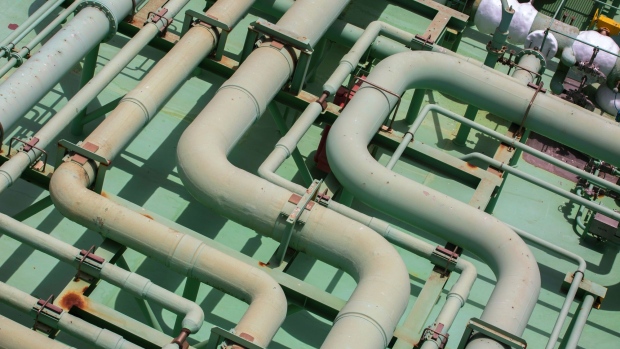Sep 23, 2022
Asia Gas Buyers Wary of Paying High Prices to Restock for Winter
, Bloomberg News

(Bloomberg) -- Some Asian liquefied natural gas importers are reluctant to procure more fuel for winter due to sky-high prices, risking shortages if the weather suddenly shifts much colder.
While Chinese and Japanese buyers are locked in discussions with suppliers about purchasing LNG shipments for the fourth quarter, negotiations are falling flat, traders said. Spot prices are too high, and the rapidly strengthening dollar is exacerbating the surge in fuel costs, they added.
Without adequate supply, a sudden blast of cold weather could boost gas consumption and leave utilities scrambling for additional shipments. The longer Asian importers balk at high prices, the more supply will be sent to Europe, where buyers are hoarding LNG to replace a drop in Russian pipeline gas flows.
The global energy crunch, exacerbated by Russia’s invasion of Ukraine, has sent natural gas prices to a record high for this time of year. Asian LNG spot rates are currently about three times higher than the 10-year average.
Jera Co. and Korea Gas Corp., the world’s top two buyers, will likely need to procure more LNG shipments to prepare for winter, but have held off on major purchases this month, traders said.
Still, some Chinese firms aren’t eager to pick up additional supply in case domestic demand falters due to another wave of virus restrictions. Gas demand from China’s industrial users could stay muted well into November due to current measures, traders said.
To be sure, there has been some LNG buying in Asia this month -- at exorbitant cost. GAIL India Ltd. bought some of the nation’s most expensive shipments earlier this month. Inpex Corp. this week purchased a shipment for December to Japan at nearly the highest price on record, traders said.
- Drivers and Tenders:
- Electricity Generating Authority of Thailand has delayed the deadline to Oct. 17 for a tender seeking the purchase of 1.2 million tons of LNG a year for delivery between 2026 to 2040; proposals initially due Sept. 22
- Russia set out just how much its gas flows to the global market will fall in the next three years -- and the numbers underscore the scale of the challenge facing Europe’s energy consumers
- Europe’s gas storage was at about 87% of capacity on Wednesday, a tad above the five-year average for this time of year
- Estimated gas flows to US LNG export terminals were about 11.5 bcf/day on Thursday, or -1.1% w/w
Buy tenders:
Sell tenders:
(Adds prices, tables from last paragraph.)
©2022 Bloomberg L.P.






